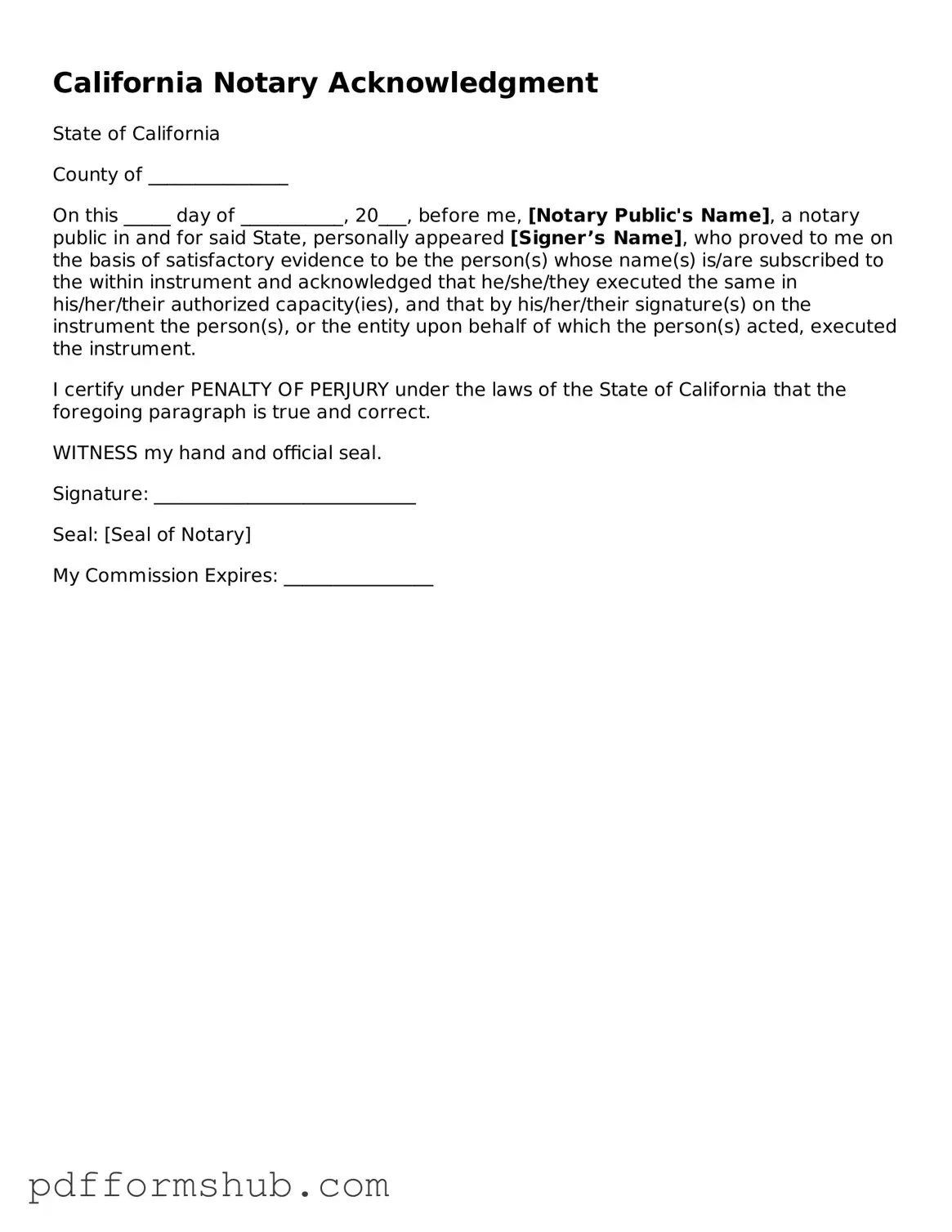Attorney-Verified Notary Acknowledgement Form for California State
The California Notary Acknowledgement form is a legal document used to verify the identity of individuals signing a document, ensuring that the signatures are authentic. This form plays a crucial role in various transactions, providing an extra layer of protection against fraud. Ready to get started? Fill out the form by clicking the button below.
Customize Form
